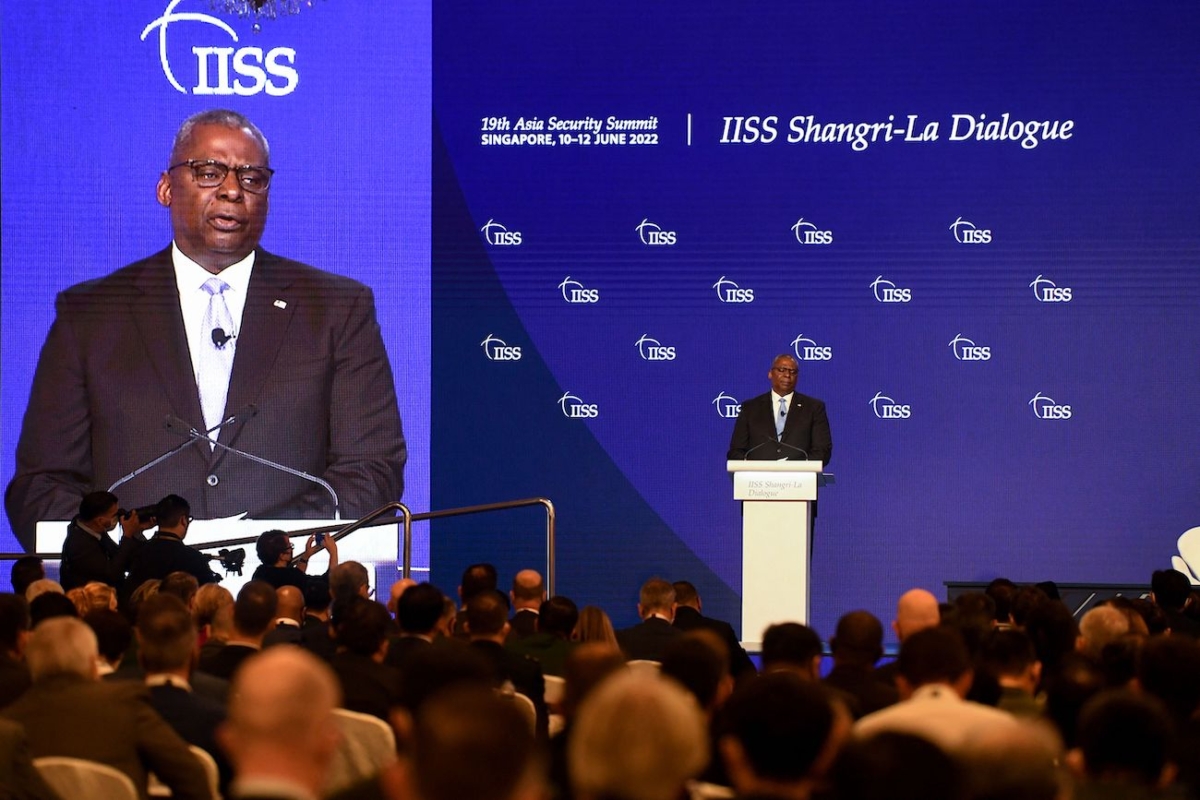A Chinese fighter jet recently carried out “an unsafe maneuver” while it was close to a U.S. Air Force plane over the South China Sea, forcing the U.S. aircraft to “take evasive maneuvers to avoid a collision,” the U.S. military announced on Dec. 29.
The encounter on Dec. 21 involved a People’s Liberation Army (PLA) Navy J-11 fighter jet and a U.S. Air Force RC-135 aircraft, a large reconnaissance aircraft.
The U.S. aircraft was lawfully conducting routine operations over the South China Sea in international airspace, according to the U.S. Indo-Pacific Command, which oversees U.S. military operations in the region.
The Chinese fighter jet “flew an unsafe maneuver by flying in front of and within 20 feet of the nose of the RC-135,” INDOPACOM said in a statement.
“The U.S. Indo-Pacific Joint Force is dedicated to a free and open Indo-Pacific region and will continue to fly, sail, and operate at sea and in international airspace with due regard for the safety of all vessels and aircraft under international law,” the statement reads.
“We expect all countries in the Indo-Pacific region to use international airspace safely and in accordance with international law.”
Video of the encounter, which appears to be from the perspective of those inside the U.S. aircraft looking forward, shows the Chinese aircraft flying in front of and at a close distance to the U.S. aircraft. The latter later descends away from the Chinese aircraft to avoid a crash.
At the time, the U.S. aircraft had about 30 people on board, reported CNN.
The Pentagon did not immediately respond to a request for comment from The Epoch Times.
The U.S. military said the incident “reflects a concerning trend of unsafe and dangerous intercept practices by the PLA that are of grave concern to the United States,” reported Defense News.
South China Sea, Taiwan See CCP Military Aggression
The United States does not recognize China’s multiple territorial claims of the South China Sea, which encompasses many islands in the area. The U.S. military continues to carry out routine operations, including freedom of navigation operations, through the region.
Beijing’s military has expended years of effort trying to force out other nations from sections of the disputed body of water, including by building artificial islands in efforts to claim more territory, and by increasing the use of its maritime militia units to harass and intimidate smaller nations.
Defense Secretary Lloyd Austin in June said in a speech at the Shangri-La Dialogue in Singapore that the United States has “seen an alarming increase in the number of unsafe aerial intercepts and confrontations at sea by PLA aircraft and vessels.”

He noted that the Chinese regime is adopting “a more coercive and aggressive approach to its territorial claims.”
“In the East China Sea, the PRC’s expanding fishing fleet is sparking tensions with its neighbors. In the South China Sea, the PRC is using outposts on man-made islands bristling with advanced weaponry to advance its illegal maritime claims,” Austin said. “We’re seeing PRC vessels plunder the region’s provisions, operating illegally within the territorial waters of other Indo-Pacific countries.”
“Indo-Pacific countries shouldn’t face political intimidation, economic coercion, or harassment by maritime militias,” he continued. “So the Department of Defense will maintain our active presence across the Indo-Pacific. We will continue to support the 2016 Arbitral Tribunal ruling. And we will fly, sail, and operate wherever international law allows.”
He acknowledged at the time that the United States has also witnessed “a steady increase in provocative and destabilizing military activity near Taiwan,” which includes “PLA aircraft flying near Taiwan in record numbers in recent months—and nearly on a daily basis.”
Since Austin’s June remarks, the Chinese regime has persisted in its military harassment in multiple instances around Taiwan, which it claims is its own territory.
Most recently, the Chinese regime on Dec. 25–26 sent 71 planes and seven ships during a 24-hour period toward Taiwan, in an apparent reaction to a recently-passed U.S. $858 billion defense spending bill that included greater support for Taiwan’s military.
The bill had defined China as a strategic challenge and authorized boosting security cooperation with Taiwan, including by providing up to $10 billion in military grant assistance to the island nation over the next five years, and arrangements for fast-tracked weapons procurement in the event of a military conflict with China.
From The Epoch Times
